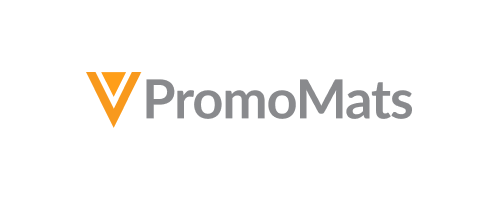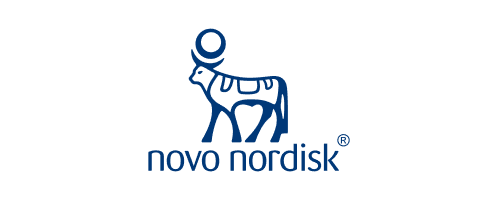Biopharmas and biotechs are investing in content to pursue ambitious omnichannel strategies, localize content for multiple markets, and meet the demand for more information from healthcare professionals (HCPs). Stacy Payne, global director of Veeva’s Content Partner Program, talked to healthcare marketing and communications experts about content marketing best practices to ensure that content is effective and created efficiently. Participants included Adam Hirsch, EVP of innovation and transformation at Real Chemistry; Christen Nyarady, EVP, delivery optimization at Omnicom Health Group; Jennifer Ma, head of operations and production, Area 23/McCann Health; and Vikki Ward, European chief of operations for Havas Creative Group and Havas Health & You.
Stacy Payne: What best practices should companies adopt to ensure content is relevant and impactful?
Adam Hirsch: The more you personalize your content, the more likely it will capture your customers’ attention. A lot of the work we do is specific to HCPs. So we put aside theories about typical digital content journeys and put ourselves into the shoes — or the lab coat — of an HCP. What do they know about us already? What would they want to learn about or discuss in our next conversation? What’s the best format to present that information in? Answering these questions helps us understand how to adjust content for different specialties or varying levels of expertise.
Vikki Ward: MLR should be your marketing team’s best friend. MLR teams don‘t want to be difficult. They don‘t go to work in the morning thinking, “How can I ruin someone‘s day by telling them that their work is no good and they have to start all over again.” And nobody wants something to take six months from beginning to end. So, bring MLR into the content creation process at the beginning of the campaign so they understand what you’re trying to achieve. Let them help you avoid medical, legal, or regulatory hurdles by suggesting a better approach. And don‘t just stop with your global team. Get your local MLR team involved as well so that you don’t leap over a global hurdle only to hit a brick wall at the local level.
Jennifer Ma: Work with your agency to create a content development and approval process that makes the most sense for your entire team — MLR teams, brand marketers, conceptual reviewers, field reps — as well as your agency. And design a workflow that stakeholders will adopt. You can build a giant tactical ecosystem, but if no one‘s on board with it, you won’t be successful. The same is true for making changes to the content based on their feedback. Everyone has to be on the same page.
Payne: Veeva Pulse data shows that 77% of all approved content is rarely or never used by field teams, and of that content, only 38% is shared digitally with HCPs. What are the barriers to digital content usage, and how can they be overcome?
Ward: The way to find out why your content isn’t being used is to ask the people who are — or aren’t — using it: your field force. They’re a massively underutilized resource. They know whether the content is moving an HCP through an adoption ladder and if that content performs when they have only three minutes before the HCP sees their next patient. They understand what an HCP wants to know during a sales call, as well as afterward — is it an email? A data portal? A reprint? A copy of a presentation? Let them help you determine what type of content to create.
Nyarady: Your content can only be used if your field teams can find it. Good digital asset management (DAM) enables your salesforce to find the content they need easily while ensuring that they’re utilizing only content that’s been approved and is up to date. It should also track content usage so that your agency and internal content team can measure which content is most useful and make decisions about new content creation based on quantitative data. The right technology can also automate decision-making about which leads to pursue, which can be especially helpful to a company that has recently scaled down its field teams.
Payne: How should content be personalized efficiently, and how can companies balance avoiding information overload and providing the necessary detail?
Ward: Content teams tend to try to cover every scenario in an interactive visual aid (IVA) or pitch deck so that the field rep has the answer or data for any question that’s asked. But look at it from the perspective of the sales rep or the customer: If someone gave you a deck with a hundred slides, what would your reaction be? It‘s overwhelming. And a sales rep can‘t be swiping through all those slides to find the one they’re after when they only have four minutes for a call. So they’ll use the same three or four slides with key content, even if they’re not moving people along that adoption ladder. Sales reps are much more comfortable — and more successful — with bite-size, modular content that homes in on a specific subject. And they don’t feel pressured to get through an overwhelming amount of slides.
Hirsch: On the other hand, a large master deck or IVA can make it easy for the field teams to customize. You start with a design system and all of your approved content. With the right technology, you can personalize it for a specific presentation, so the customer sees only the right content at the right moment. There’s a misconception that personalized content means completely new content. But reuse is critical. Small tweaks, even at the field level, can make existing content more relevant to a personalized customer journey.
Nyarady: Beginning with standardized design systems and modular content like claims libraries lets you increase the velocity with which you personalize your content because you’re beginning with accurate, MLR-approved copy and templatizing production. Your agency can also help you understand market segmentation more fully by interpreting the behavioral data you collect, such as which of your sales reps is using your content and which prospects are engaging with it. The better you understand the market segment, the more successfully you can personalize — and target — your content, and then ensure your field teams are using the right content with the right market segment.
Payne: As Christen just noted, metrics and analytics play a vital role in understanding the impact of content. What KPIs or metrics should an organization use to evaluate the effectiveness of its content strategy?
Ma: Building on what Christen said, two important metrics are the amount of time someone spends looking at the content and how often field teams use it.
Ward: I completely agree. And the depth and frequency of our data reviews are key as well. If we take consistent snapshots of the data, we can use it to inform how we change existing content or what new content we create. And it’s imperative that companies share the data with their agencies so we can understand why a specific page isn’t being used — is the layout confusing? Is the data unimportant? Does it resonate globally but not locally? If it contains key messaging, can we reimagine how it is being presented? Data lets us evolve our campaigns effectively rather than just ripping them up and starting again.
Ma: We’ve talked about the importance of reusing content. But if you can‘t see the data and what‘s working, there‘s a risk that you might reuse content that isn‘t working well out in the field.
Payne: Let’s discuss the content supply chain and issues of localization and adaptation, which are crucial for reaching diverse markets. How do you create globally scalable, multichannel content while ensuring cultural sensitivity and relevance?
Ward: It’s all about co-creation. Once a piece for one market has been approved, it‘s too late to test it in a second market. So modular content is the best friend of localization. A truly global co-creation team can create individuated content for localized markets that is in line with the global messaging and content goals. The local market team doesn’t need to re-create it because their needs have been considered upfront.
Nyarady: Multichannel content is often authored inefficiently — one author for one channel, one author for another, and so on. That stretches out the approval process because each piece has to be approved individually, even if the baseline content is identical. Organizing accurate, approved content properly within a DAM lets you personalize content for different delivery channels more easily while streamlining the approval process.
Payne: Speaking of MLR, how can organizations engage and collaborate with MLR teams to ensure content meets regulatory requirements, and what happens when compliance inhibits impactful content?
Hirsch: Problems most often arise when trying to do something new, with more complexity and personalization. That may sound scary to an MLR team. Building relationships with MLR early on is essential. MLR doesn’t want to ruin a content campaign. And the content team wants the campaign to be compliant with legal and regulatory issues. The two teams come from different perspectives, but their goal is the same. The earlier you explain your strategy to MLR, the earlier they can voice their concerns. That can lead to great discussions, faster approvals, and fewer late-stage rejections or do-overs. And it builds trust among the entire team for future collaboration.
Payne: What final advice or key takeaways do you have regarding meaningful content strategies and the role of agencies in this industry?
Hirsch: Success is about building relationships — between your company and your agency, as well as the HCPs in your audience. Nurture the internal relationships necessary to make sure that content creation comes to successful fruition.
Nyarady: Make sure you’re all aligned on your content strategy, tactical plans, operational practices, and governance models. And having and sharing the right technology is key. Build out a DAM and give your agency access to it so they have a comprehensive understanding of your content library and you maintain a single source of truth across your entire content creation ecosystem.
Ma: Tying together different roles, different departments, different perspectives, and even different tools is a tremendous undertaking. The key is finding an agency you trust to partner with so you can be on the same page from the get-go.
Ward: Let your agency be part of your team. Share your information and your data with them. Help them understand the challenges and your customers. And include them in these conversations earlier in the process. It will enable them to do a better job for you.
Learn more about working with agencies and Veeva’s Agency Opinion Leaders.
More Customer Stories
Learn From Content Experts
How They Achieved It
Read Key Steps



